The steady decline of arcade gaming in the US over the late '90s meant that more and more developers began to take their franchises to home consoles. Ridge Racer V, released in 2000 was an extremely rare game that saw success on both the Playstation 2 as well as the arcade. Namco knew that the US would not support the arcade market as they once had through the late '70s and '80s. Console, PC and mobile gaming had completely eclipsed the out-of-home experience.
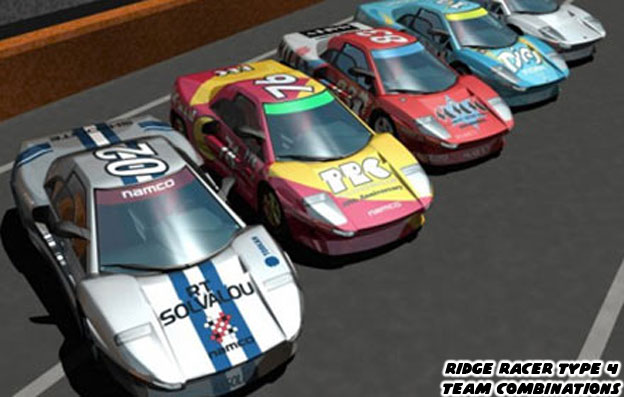
Namco made a solid effort to ensure that every iteration of Ridge Racer offered experiences that could not be matched in the arcade. The most important of these game design elements being time. An arcade game is meant to be enjoyed in a few short bursts. Longer, more drawn out stories and adventures were rarely presented. If the arcade title was meant to last 5 or 10 minutes then it was usually very difficult, and required players to continuously add credits to the machine. Console players never had to worry about running out of money or time. They expected to get the greatest possible experience for their dollar as they could. Namco did everything in their power to make arcade visitors feel like they were having the superior experience. This was partly the reason why the company created the Wonder Eggs theme park. It featured many attractions based on Namco titles.
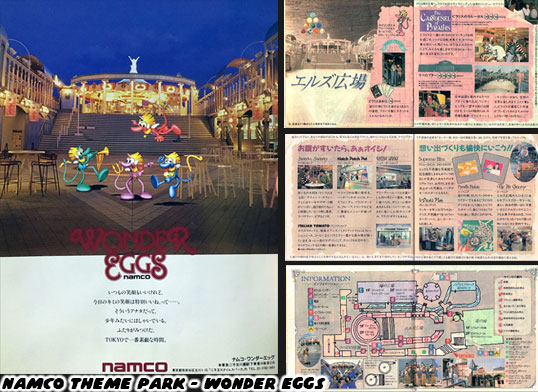
Ridge Racer Type 4 set the bar impossibly high. No arcade to console series would ever match the numbers in that game. There were four manufacturers, four teams and eight tracks for players to choose from. That doesn't sound very impressive but the 321 cars that could also be unlocked certainly was. Namco gave racing fans a reason to go through multiple replays. When technology improved so did the franchise. Ridge Racer V gave audiences a taste of the classic arcade experience but with enhanced graphics and many more secrets to unlock. In 2003 Namco tried their boldest experiment yet. R: Racing Evolution (RRE) was an attempt at redefining the franchise. It was not a radical shift as in Ridge Racer Unbounded. The game still had the classic racing experience but featured actual manufacturers instead of fictional ones. The story elements from Ridge Racer Type 4 were fleshed out with a defined hero named Rena Hayami and a villain with the corporate sponsors G.V.I. Console players however were hoping that Namco would return to their roots.
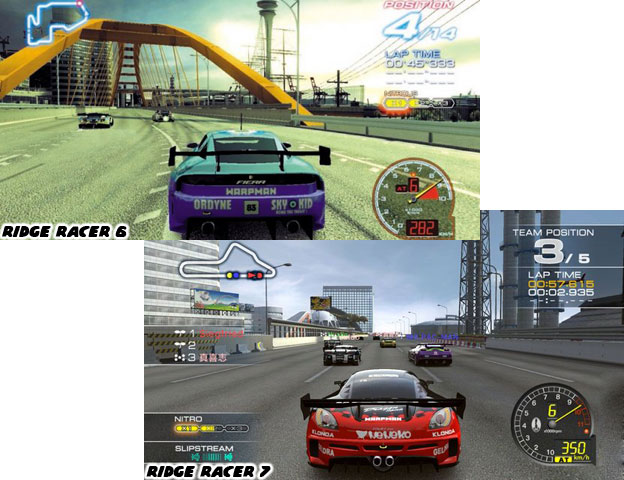
In 2005 Namco released Ridge Racer 6. It was an Xbox 360 exclusive much to the surprise of Sony fans. The visuals had jumped exponentially over the previous game. The new hardware was capable of creating cars and tracks which were amazing. For the first time the studio could claim to have photorealistic visuals for their long-running franchise. Ridge City and the surrounding communities looked as vivid as any real world location that had been featured in a rival AAA title. Reiko Nagase had even returned in the opening animation and all seemed right with the world. What audiences did not know was what the studio was secretly working on. The developers were refining the cars, locations, tracks and animations over the course of that calendar year. In 2006 the Playstation 3 received a superior version of the game labeled Ridge Racer 7. Again the bar had been raised, this time in full HD and with online gameplay that would have been a dream a decade earlier.
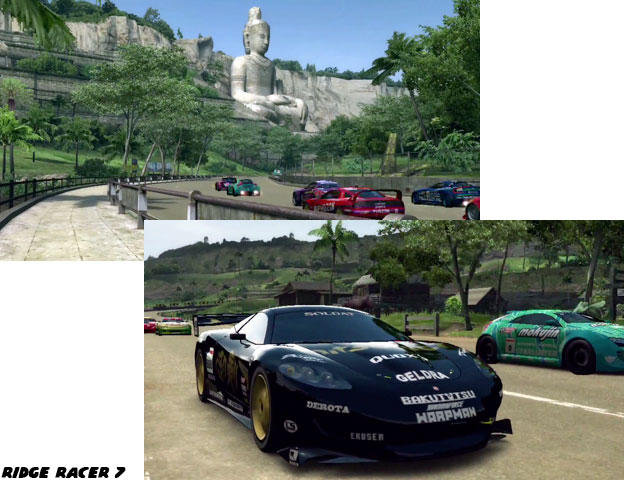
The new Ridge Racer experience had improved in several ways, not the least of which were track designs. Namco actually came close to topping Sega's best work in several courses. The studio had a record of using storytelling elements in several of their games, including the Ace Driver, Cyber Cycles and Final Lap. The elements featured in those tracks never pushed the envelope as far as Sega did. Namco made up for the lack of spectacle with realism. Certainly a track could exist near some ancient ruins but it would never desecrate the history of that region by putting a winding course through a temple. In the Mist Falls and Lost Ruins courses Namco developers connected portions of an ancient road with a modern expressway. Cars would drift between several different eras in the Southeast Asian-themed tracks during each lap. Part of the course would run through caves and rice patties and part or the road was tethered to pylons and floating above the tide on pontoon bridges. Visually it was another stunner but every element incorporated into the track was inspired by actual locations and even road technology. My Cambodian and Vietnamese friends would comment on how familiar the sights looked, including the foliage and rural villages as I raced around the courses.
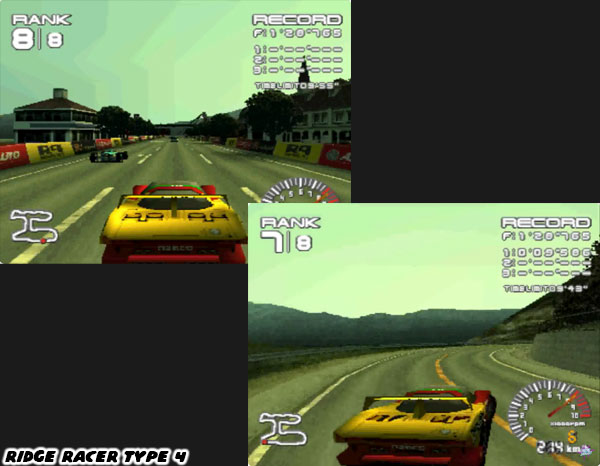
It was often the little details that were overlooked in other racing games that Namco capitalized on It was like a trade secret for the studio. In many of their locations players could actually see a walkway that followed the edge of the track. The majority of the locations featured in the Ridge Racer series were supposed to be used as public roads when cars were not racing on them. Because of that many of the tracks in the series actually had temporary barriers and cones cutting off side streets. Players could still make out sidewalks, driveways and exits on the side of the road. Even the tiniest of details, like stairs, bridges and doorways meant for pedestrians were easy to make out in the edges of each course. It was an absurd amount of work that went into each and every course but the end result was worth it to gamers.
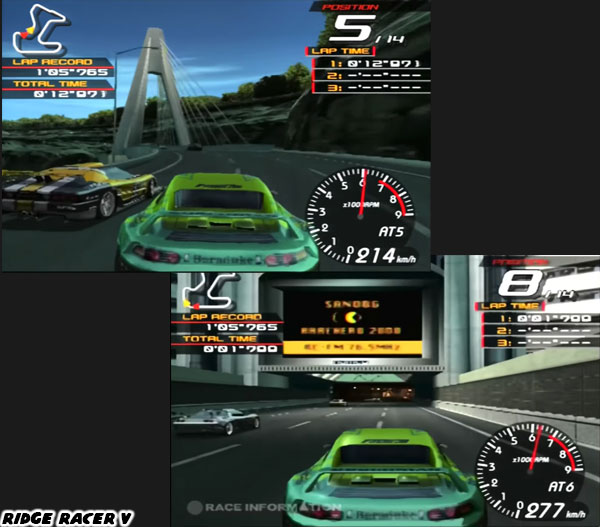
No other fictional place looked as inviting in any other racing series. Namco never lost focus on the big picture. The courses had to be visually appealing even while traveling well over 200MPH. Many of the smaller details that I had described were nothing more than a blur at high speed. The larger set pieces that the developers had created as scenery certainly stood out. The enormous sitting Buddha in the Thai-inspired tracks was one example. The studio had been creating enormous scenery features since the very first game. The multitude of bridges that were featured across several sequels were always memorable. In fact it would be hard to imagine a Ridge Racer track that did not have at least one unique bridge incorporated into the layout. Enormous suspension, truss and cantilever bridges were impossible to ignore from a distance, even while traveling at a very high speed.
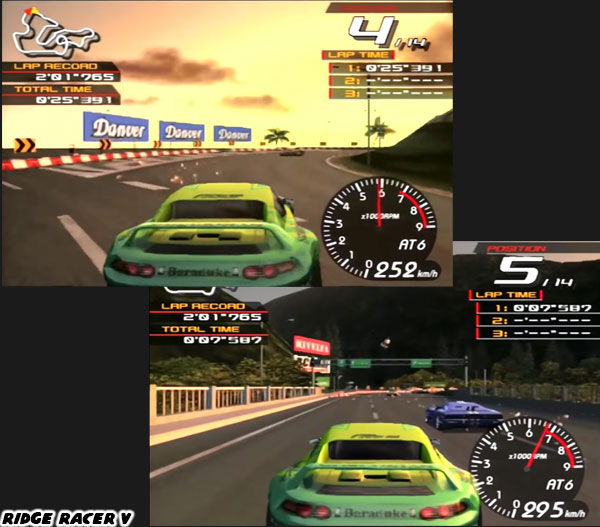
Every track in the Ridge Racer series had been set at a particular time of day, most often with the lighting and weather that best highlighted the location. The majority of the tracks featured perfect weather, some with a hint of sun gleaming off the screen. Other tracks were set at dusk when the color of the sky was a blend of bright colors. Some of the greatest tracks however were presented at night. No other city created by Namco, or many other developers for that matter, looked better than Rave City at night. Not Ridge City, Bayshore or even the Bugbear developed Shatterbay. Rave City had come a long way since it debuted in 1995.
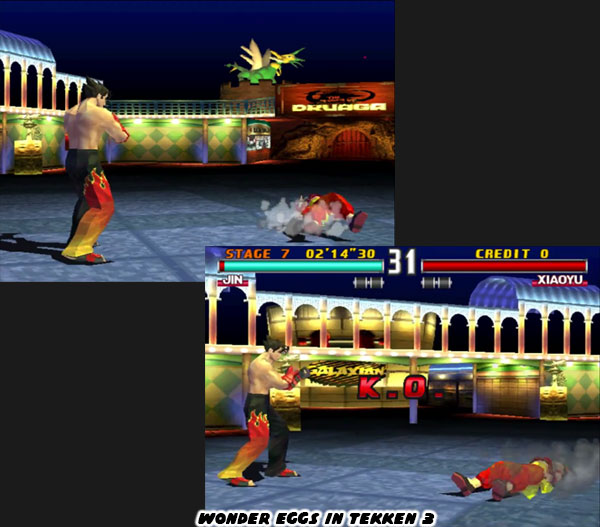
Gone were the billboards advertising arcade games from the '80s and '90s. Gone were the see-saw screen tilts, chunky car textures and annoying voice-overs. The new Rave City and its multitude of courses were cast in perpetual midnight. The enormous skyscrapers that lined the roads were illuminated with millions of lights. Drivers could make their way across the bay by taking a series of massive bridges or by using a series of underground tunnels colored by neon lights. To add Sega-style spectacle to the location there was even a theme park, casino, shopping complex and stadium located through, next to and under the courses. It was essentially the great timeline version of the Wonder Eggs theme park that Namco hoped to have built. Sharp-eyed arcade fans could spot a rollercoaster modeled after the classic fantasy title The Tower of Druaga. Even in this world every Namco shout-out had to be acceptable in canon.
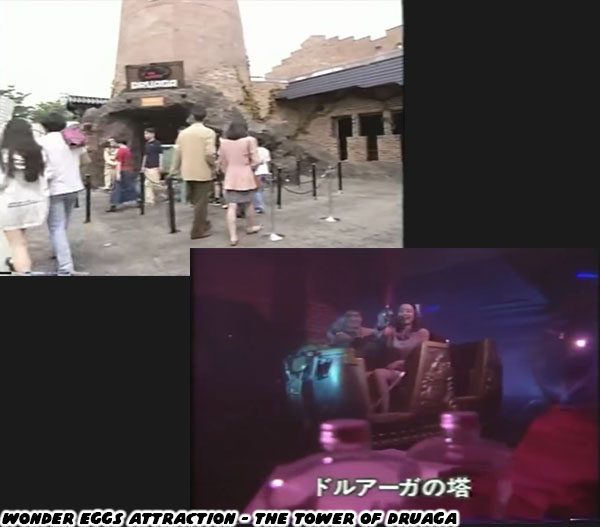
Fireworks could be seen lighting up the sky over the The Rave City theme park. The gigantic ferris wheel sparkled with thousands of multicolored LED lights and part of the Druaga coaster track was suspended over the street course. There was even a huge man made volcano that would spit out smoke and fire on regular intervals. The enormous castle was undoubtedly modeled after Tokyo Disneyland and the volcano after the one in the neighboring Tokyo Disney Sea park.
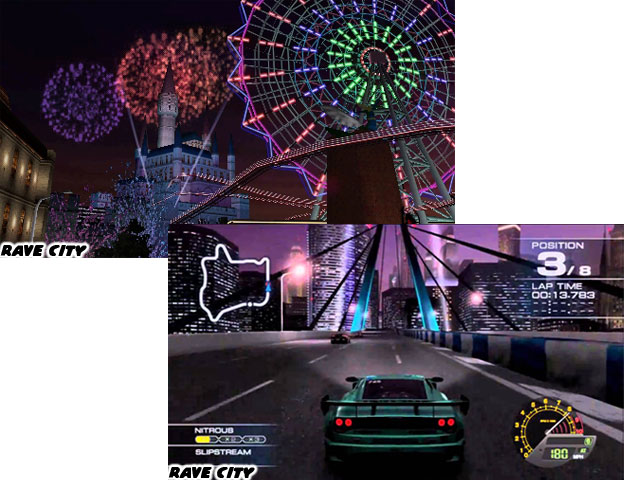
A portion of the backlot could be raced through, making the Downtown Rave City and Crossbay Tunnel courses almost as memorable as Sega's legendary Joypolis 2020 course from Daytona USA 2. The Namco response was essentially Wonder Eggs World 3030. This was the Ridge Racer experience that long-time fans were hoping to see on newer consoles. It was the evolutionary step from Ridge Racer Type 4 that wasn't reached in Ridge Racer V. The experience was far more fantastic than any previous title yet maintained a certain sense of realism, rather than reality.
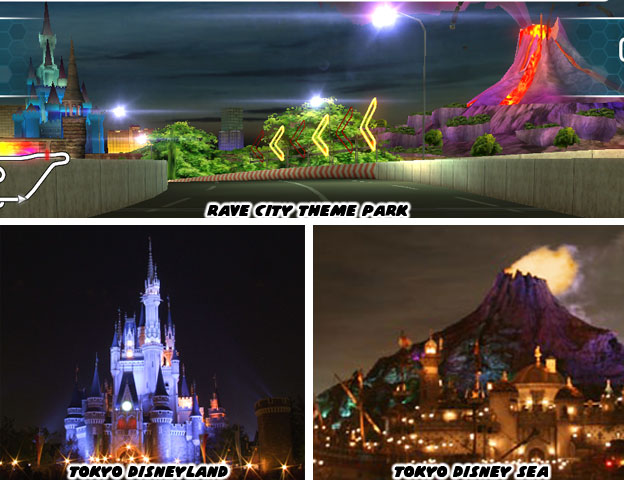
The sense of the impossibly fast races and futuristic landscapes was absent when Bugbear Entertainment developed Unbounded. Everything suddenly became dark and gritty. The streets were dirty and cracked, the world was covered with a layer of grime. Cinematic reality was the goal that the developers had achieved. It was visually amazing but somewhat depressing at the same time. The atmosphere in Unbounded was nihilistic, the studio wanted drivers not to feel bad about destroying the city of Shatterbay with unstoppable muscle cars.
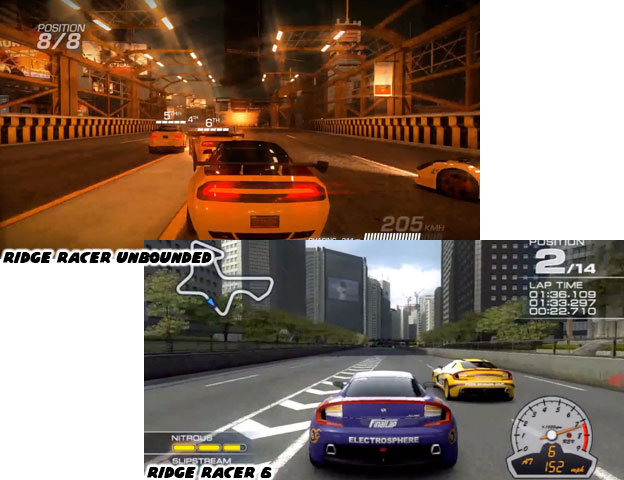
Bugbear Entertainment had changed the world of Ridge Racer to suit their vision. I don't hold it against them. Unbounded was a great game, but it was not a Ridge Racer experience. Namco had made the mistake of following a trend rather than charting out its own destiny. Destruction racing, action racing, whatever the gaming media dubbed it was almost a decade old before the Japanese publisher decided to cash in on it. The worst thing was that Namco had turned its back on the promise of tomorrow.
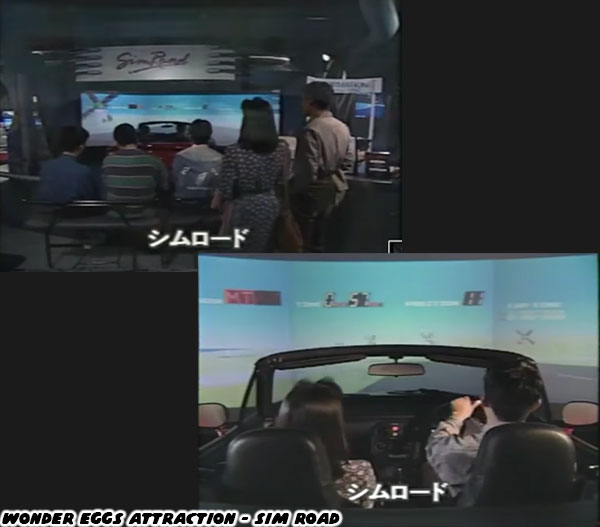
The future was the strongest selling point that the series had going for it. Every version of the game was meant to push the boundaries of racing. It dared to ask the question of what would happen if there was an era without conflict and without strife. What sorts of entertainment achievements could be achieved in that time? How much more amazing of a spectacle would racing become if the biggest industries were invested in it rather than in the instruments of war? The next blog will answer that question.
As always if you would like to sponsor me
please visit my Patreon page and consider donating each month, even as little as $1 would help make better blogs and even podcasts!


























No comments:
Post a Comment